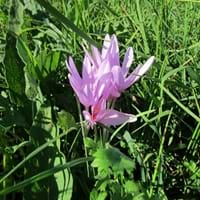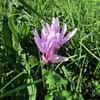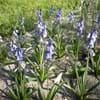Life Span
Perennial
Perennial
Type
Bulb or Corm or Tuber
Shrub
Origin
Europe, Turkey, Central Asia, Western Asia
Southeastern United States
Types
Colchicum cupanii, Colchicum alpinum
Not available
Habitat
Fields, meadows, Rocky areas, Shaded sites, Woodlands
Bluffs, Coastal Regions, Stream side, Woods
USDA Hardiness Zone
Not Available
5-9
AHS Heat Zone
Not Available
9-1
Sunset Zone
21,22
Not Available
Habit
Clump-Forming
Spreading
Flower Color
White, Yellow, Purple, Violet
White, Pink
Flower Color Modifier
Bicolor
Bicolor
Fruit Color
Not Available
Brown
Leaf Color in Spring
Green
Green
Leaf Color in Summer
Light Green
Dark Green
Leaf Color in Fall
Several shades of Green
Lemon yellow, Yellow green
Leaf Color in Winter
Light Green
Not Available
Leaf Shape
Long Linear
Palmate
Plant Season
Spring, Fall, Winter
Spring, Summer, Fall
Sunlight
Full Sun, Partial Sun
Full Sun, Partial Sun, Partial shade
Type of Soil
Loam
Clay, Loam, Sand
The pH of Soil
Acidic, Neutral
Acidic, Neutral, Alkaline
Soil Drainage
Well drained
Average
Bloom Time
Early Spring, Late Summer, Early Fall, Fall, Late Fall, Winter, Late Winter
Summer, Late Summer
Tolerances
Drought
Salt, Wind
Where to Plant?
Container, Ground, Pot
Ground, Pot
How to Plant?
Divison, Seedlings
Cuttings, Seedlings
Plant Maintenance
Low
Low
Watering Requirements
Do Not over Water, Medium, Needs less watering, Never Over-water, Requires regular watering, Water less during winter
Keep the Soil well drained, Requires regular watering
In Summer
Ample Water
Lots of watering
In Spring
Less Watering
Moderate
In Winter
Less Watering
Average Water
Soil pH
Acidic, Neutral
Acidic, Neutral, Alkaline
Soil Type
Loam
Clay, Loam, Sand
Soil Drainage Capacity
Well drained
Average
Sun Exposure
Full Sun, Partial Sun
Full Sun, Partial Sun, Partial shade
Pruning
Remove damaged leaves, Remove dead leaves, Remove dead or diseased plant parts, Remove shoots
Remove damaged leaves, Remove dead branches, Remove dead flowers, Remove dead leaves
Fertilizers
fertilize in growing season, Less fertilizing
14-14-14 Fertilizer, Apply N-P-K, slow-release fertilizers
Pests and Diseases
Not Available
Edema, Powdery mildew, Verticillium Wilt
Plant Tolerance
Drought
Salt, Wind
Flower Petal Number
Single, Double
Single
Foliage Texture
Coarse
Coarse
Foliage Sheen
Not Available
Matte
Attracts
Bees, Butterflies
Butterflies, Hummingbirds
Allergy
Kidney Disease, Low blood pressure, Stomach pain, Toxic, Vomiting
Pollen
Aesthetic Uses
Landscape Designing
Cottage Garden, Showy Purposes
Beauty Benefits
No Beauty Benefits
Not Available
Environmental Uses
Air purification, No fertilizer, pesticides, or herbicides needed, Prevent Soil Erosion
Air purification, Wildlife
Medicinal Uses
anti-cancer, anti-inflammatory, Diarrhea, Diuretic, Rheumatism
Antirheumatic, Colic, constipation, Piles
Part of Plant Used
Flowers, Leaves
Seeds
Other Uses
Employed in herbal medicine, Showy Purposes, Used as Ornamental plant, Used for its medicinal properties
Used for making soaps
Used As Indoor Plant
Yes
No
Used As Outdoor Plant
Yes
Yes
Garden Design
Alpine, Container, Cutflower, Foundation, Lawns and Turf, Mixed Border, Rock Garden / Wall, Wildflower
Feature Plant, Foundation, Screening, Wind Break
Botanical Name
COLCHICUM
AESCULUS parviflora
Common Name
Colchicum
bottlebrush buckeye, dwarf horse chestnut
In Hindi
colchicum
Bottlebrush Buckeye
In German
colchicum
Buckeye Putzer
In French
colchique
Bottlebrush Buckeye
In Spanish
Colchicum
bottlebrush Buckeye
In Greek
Colchicum
bottlebrush Buckeye
In Portuguese
Colchicum
Bottlebrush Buckeye
In Polish
Colchicum
Bottlebrush Buckeye
In Latin
Colchicum
bottlebrush Buckeye
Phylum
Magnoliophyta
Magnoliophyta
Class
Liliopsida
Magnoliopsida
Order
Liliales
Sapindales
Family
Liliaceae
Hippocastanaceae
Clade
Angiosperms, Monocots
Angiosperms, Eudicots, Rosids
Tribe
Not Available
Not Available
Subfamily
Wurmbaeiodeae
Hippocastanoideae
Properties of Colchicum and Bottlebrush Buckeye
Wondering what are the properties of Colchicum and Bottlebrush Buckeye? We provide you with everything About Colchicum and Bottlebrush Buckeye. Colchicum doesn't have thorns and Bottlebrush Buckeye doesn't have thorns. Also Colchicum does not have fragrant flowers. Colchicum has allergic reactions like Kidney Disease, Low blood pressure, Stomach pain, Toxic and Vomiting and Bottlebrush Buckeye has allergic reactions like Kidney Disease, Low blood pressure, Stomach pain, Toxic and Vomiting. Compare all the properties and characteristics of these two plants. Find out which of these plant can be used as indoor plant. If you are interested to decorate your house and garden, find out aesthetic uses, compare them and select the plant which will beautify your surrounding. Along with beautification, try comparing medicinal and edible uses of Colchicum and Bottlebrush Buckeye and you can choose the plant having best and most benefits.
Season and Care of Colchicum and Bottlebrush Buckeye
Season and care of Colchicum and Bottlebrush Buckeye is important to know. While considering everything about Colchicum and Bottlebrush Buckeye Care, growing season is an essential factor. Colchicum season is Spring, Fall and Winter and Bottlebrush Buckeye season is Spring, Fall and Winter. The type of soil for Colchicum is Loam and for Bottlebrush Buckeye is Clay, Loam, Sand while the PH of soil for Colchicum is Acidic, Neutral and for Bottlebrush Buckeye is Acidic, Neutral, Alkaline.
Colchicum and Bottlebrush Buckeye Physical Information
Colchicum and Bottlebrush Buckeye physical information is very important for comparison. Colchicum height is 7.60 cm and width 7.60 cm whereas Bottlebrush Buckeye height is 180.00 cm and width 180.00 cm. The color specification of Colchicum and Bottlebrush Buckeye are as follows:
Colchicum flower color: White, Yellow, Purple and Violet
Colchicum leaf color: Green
Bottlebrush Buckeye flower color: White and Pink
- Bottlebrush Buckeye leaf color: Green
Care of Colchicum and Bottlebrush Buckeye
Care of Colchicum and Bottlebrush Buckeye include pruning, fertilizers, watering etc. Colchicum pruning is done Remove damaged leaves, Remove dead leaves, Remove dead or diseased plant parts and Remove shoots and Bottlebrush Buckeye pruning is done Remove damaged leaves, Remove dead branches, Remove dead flowers and Remove dead leaves. In summer Colchicum needs Ample Water and in winter, it needs Less Watering. Whereas, in summer Bottlebrush Buckeye needs Lots of watering and in winter, it needs Average Water.





